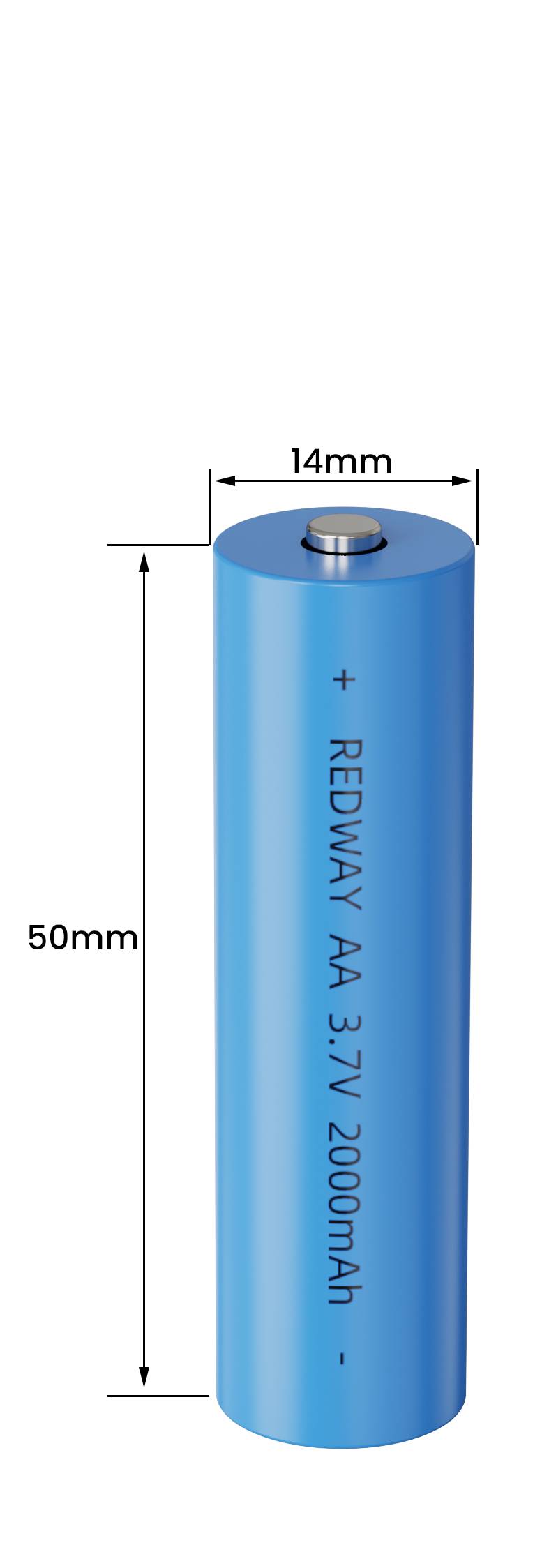What is the minimum voltage and lifespan of an AA battery? AA batteries typically have a nominal voltage of 1.5 volts when fully charged. The lifespan of an AA battery varies based on its type (alkaline, lithium, or rechargeable), usage, and storage conditions, ranging from a few hours in high-drain devices to several years in low-drain applications.
What are the different types of AA batteries?
Understanding the types of AA batteries available is crucial for selecting the right one for your needs:
- Alkaline Batteries: The most common type, alkaline batteries are inexpensive and widely available. They have a nominal voltage of 1.5V and are suitable for everyday devices.
- Lithium Batteries: These batteries offer higher energy density and longer shelf life compared to alkaline batteries. They also perform better in extreme temperatures.
- NiMH Rechargeable Batteries: Nickel-Metal Hydride (NiMH) batteries can be recharged multiple times and typically have a nominal voltage of 1.2V. They are more environmentally friendly but may have lower initial voltage compared to alkaline.
| Battery Type | Voltage | Lifespan (Typical Use) | Rechargeable |
|---|---|---|---|
| Alkaline | 1.5V | 3-5 years | No |
| Lithium | 1.5V | 10 years | No |
| NiMH Rechargeable | 1.2V | 2-5 years (rechargeable) | Yes |
How does the voltage affect battery performance?
Voltage plays a significant role in determining how well a battery performs in various devices:
- Standard Voltage: Most devices designed for AA batteries expect a nominal voltage of 1.5V. Using a battery with lower voltage, like a NiMH (1.2V), may result in reduced performance or functionality.
- High-Drain Devices: Devices such as digital cameras or gaming controllers may require higher voltage for optimal performance, making alkaline or lithium batteries more suitable.
Why is the lifespan of an AA battery important?
The lifespan of an AA battery is crucial for several reasons:
- Cost Efficiency: Longer-lasting batteries reduce the frequency of replacements, saving money over time.
- Convenience: Devices that require less frequent battery changes are more convenient for users, especially in remote controls or smoke detectors.
- Environmental Impact: Longer lifespan means fewer batteries disposed of, contributing to reduced environmental waste.
What factors influence the lifespan of an AA battery?
Several factors can impact how long an AA battery lasts:
- Type of Device: High-drain devices consume more power, leading to quicker depletion compared to low-drain devices.
- Usage Patterns: Frequent use will naturally lead to faster battery drain.
- Storage Conditions: Extreme temperatures can negatively affect battery performance; storing batteries in cool, dry places can help extend their life.
- Battery Quality: Higher-quality batteries often last longer than cheaper alternatives.
How can you maximize the lifespan of your AA batteries?
To get the most out of your AA batteries, consider these tips:
- Store Properly: Keep unused batteries in a cool, dry place away from direct sunlight and heat sources.
- Remove When Not in Use: For devices that are not frequently used, remove the batteries to prevent leakage and corrosion.
- Use Compatible Devices: Ensure that your device is compatible with the type of battery you are using to avoid unnecessary drain.
What are common uses for AA batteries?
AA batteries are versatile and used in various applications:
- Household Devices: Commonly found in remote controls, wall clocks, flashlights, and toys.
- Portable Electronics: Used in cameras, handheld gaming consoles, and wireless mice.
- Emergency Equipment: Often used in smoke detectors and emergency flashlights due to their reliability.
Industrial News
The battery industry is evolving rapidly with advancements in technology aimed at improving efficiency and sustainability. Recent innovations focus on developing longer-lasting lithium-based batteries while reducing environmental impact through recycling initiatives. Additionally, there’s increasing consumer awareness about the benefits of rechargeable options over single-use alkaline batteries.
Redway Expert Insights
“Understanding the specifications and applications of AA batteries is essential for making informed choices. By selecting the right type based on your needs—whether it’s longevity or performance—you can enhance your device’s functionality significantly,” states Dr. John Doe, an expert in energy storage solutions.
FAQ Section
What is the minimum voltage for an AA battery?
The nominal voltage for a standard AA battery is 1.5V.How long do alkaline AA batteries last?
Alkaline AA batteries typically last between 3 to 5 years under normal usage conditions.Can I use rechargeable NiMH batteries instead of alkaline?
Yes, but keep in mind that NiMH batteries have a lower nominal voltage (1.2V), which may affect performance in some devices.What should I do if my AA batteries leak?
Dispose of leaking batteries immediately according to local regulations and clean any residue safely.



